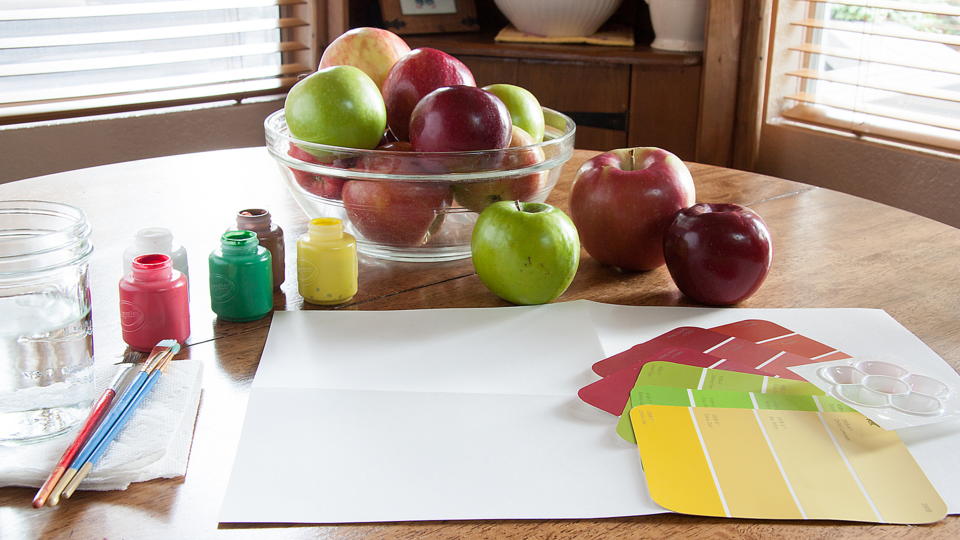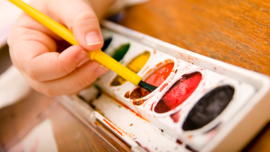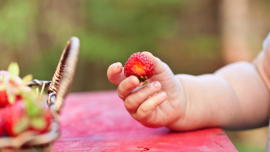Observational apple painting

Celebrate the change of the seasons with this creative apple activity.
You'll Need
- Variety of apples
- White paper
- Red, green, yellow, white & brown paint
- Paintbrushes
- Paint swatches (optional)
Time
60 minutes
Learning Stages

My favorite activities for young children involve open-ended art with natural elements. Every fall, giant bins of different varieties of apples appear at our local farmer’s markets and fruit stands. There are so many different sizes, shapes and colors of apples, I’ve been excited to use these beauties in a fun and creative, open-ended art project.
The idea behind this activity is to simply set up a few painting materials in front of a selection of apples, and let kids get creative. Once kids see the subject (apples), and notice the different tools and paints, they are absolutely drawn to create.
Here are a few tips for setting up and guiding the activity:
- Place the apples in a container that allows children to see them. A clear glass bowl is great because kids are able to look at the different colors as they are painting.
- I try to keep the space simple, with white, tan or neutral-colored paper and table coverings. I like the vivid colors of the apples to be the focus.
- Most young children will instinctively dip their brushes into a green or red container and start painting. Encourage them to take a look at the different paint swatches before painting. Notice the subtle differences in color and ask children how they think they can make a similar color.
- Talk about the roundness of the apples and invite children to notice differences in size and shape. Ask them how they can show those differences in their paintings. Calling their attention to details will help your child focus fully on the task.
- Encourage children to take their time. It’s important to not to rush through to finish the product, but to also enjoy the process.











